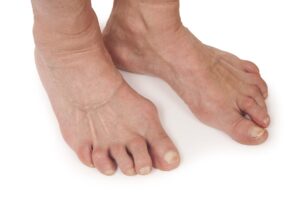
Hip Dysplasia: A Guide for Parents and Adults
Hip dysplasia (developmental dysplasia of the hip – DDH) is a condition that affects the hip joint.

As discussed in previous blogs, ankle sprains are not injuries that fully heal once the pain has subsided. A full rehabilitation program is essential to ensure that the muscles around the affected ligaments are strong enough to aid the ligament in healing, since ligaments have a poor vascular supply compared to muscles and bony structures. This will ensure that your lateral ligaments strong enough to resist inversion forces at your ankle to prevent future ankle sprains.
Managing acute and chronic ankle sprains requires two different treatment plans as there are different goals to achieve. Beginning with acute ankle sprains, the initial goals are pain reduction, improving range of motion and reducing swelling. The following should be performed when treating an acute ankle sprain, within 1 – 3 days after the injury:
A chronic ankle sprain is often called chronic ankle instability. This occurs when the symptoms of an ankle sprain arise despite no acute ankle injuries occurring, or symptoms are still present 1 – 2 weeks after an acute ankle sprain. It is common in individuals with a previous history of ankle sprains or those who perform side – to – side sports that increase the risk of getting an ankle sprain. Compared to an acute ankle sprain, the goals for rehabilitation are to reduce the pain symptoms, improve strength of the surrounding muscles and improve balance. The following exercises are ones to begin with. Again, double check this with your health professional before commencing:
Rehabilitation for ankle sprains are important for further injury prevention and to ensure that you can go back to doing what you love without any concerns. If you are having problems with your ankles from a history of ankle sprains, let the team at SOLE – LUTION PODIATRY help you. You can reach us on 02 9569 5145.
Thanks!
Luke Sassine

Hip dysplasia (developmental dysplasia of the hip – DDH) is a condition that affects the hip joint.

Heel pain can be a real drag, especially when that first step in the morning feels like stepping on a tack. One culprit behind this discomfort can be heel spurs. But what exactly are they, and more importantly, how can you fix them?

Arthritis in the feet can significantly disrupt your daily life, turning simple walks into painful struggles.